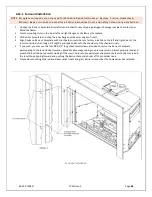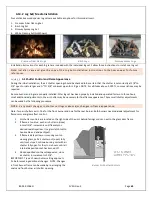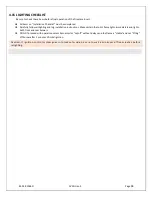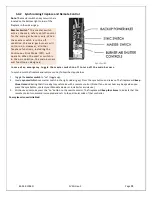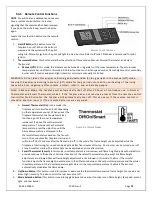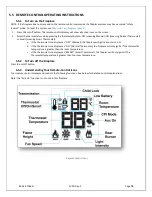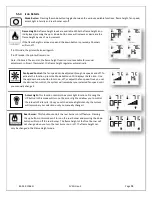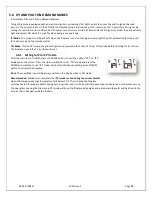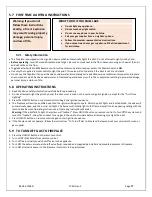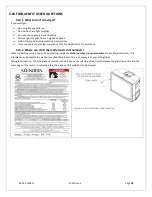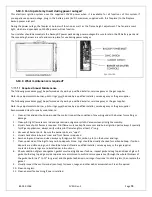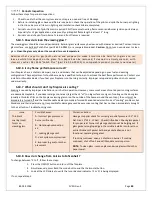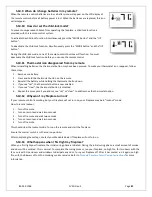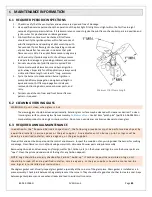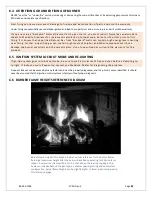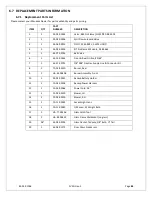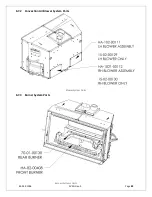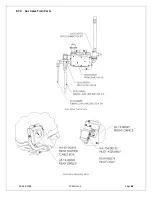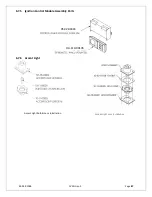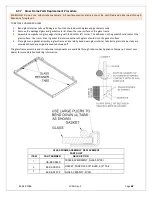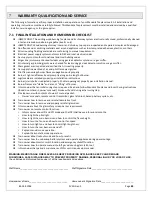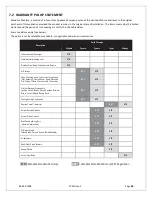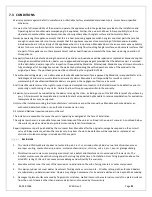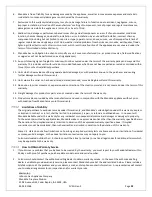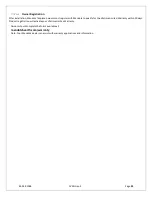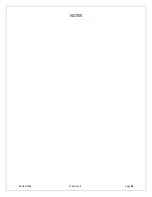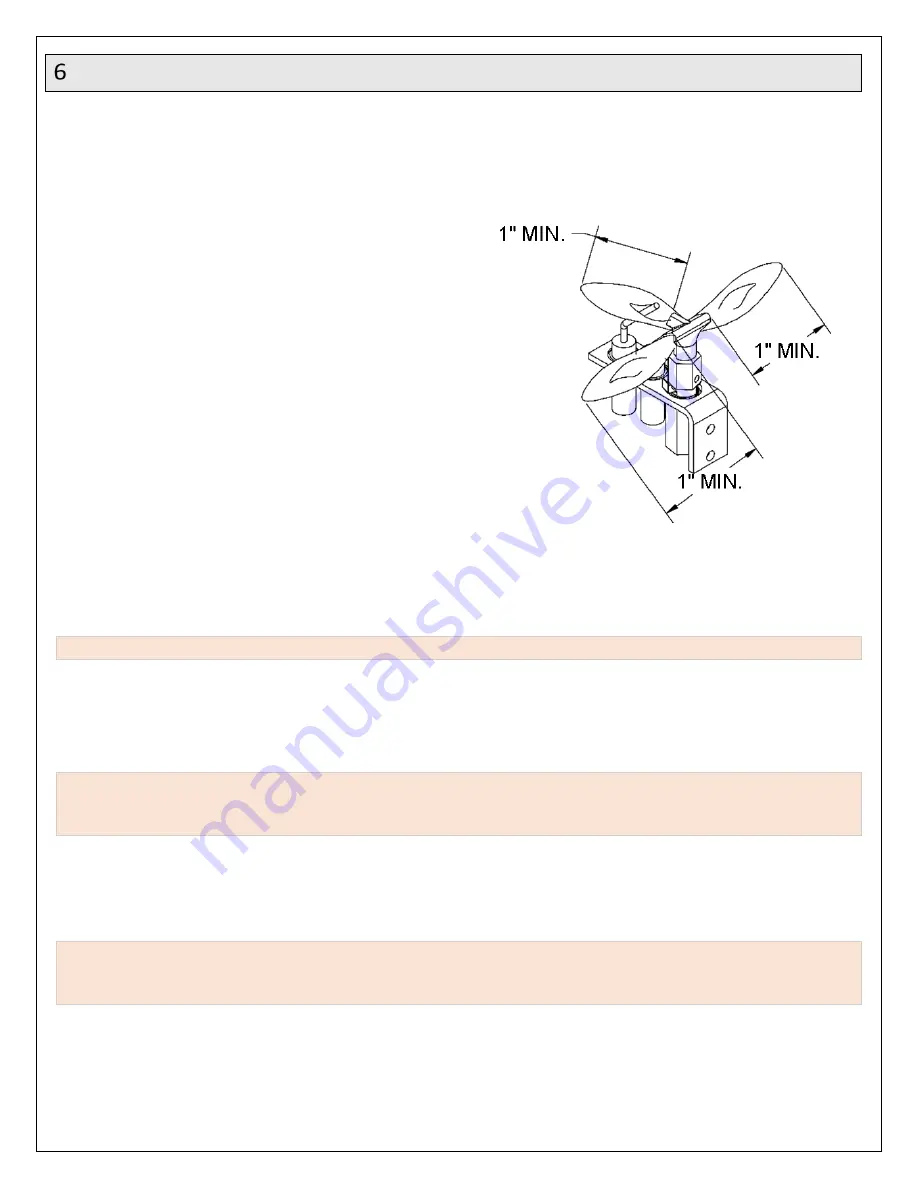
85-03-01058-O
FV33i Gen 3
Page
82
MAINTENANCE INFORMATION
6.1
REQUIRED PERIODIC INSPECTIONS
1.
Check to verify that the vent system and vent cap are open and free of blockage.
2.
Have qualified service person check the operation of the pilot light. Pilot light must light within the first five to eight
seconds of ignitor sparks initiation. If it takes more ten seconds to ignite the pilot flame, check pilot spark rod position and
ignitor wires for pinched areas or damaged areas.
3.
Pilot rectification time must be checked. Pilot flame
should rectify the ignition system within five seconds of
pilot flame ignition and sparking at pilot must stop with
five seconds. If pilot flame ignites but sparking continues
at pilot hood after five seconds, it indicates that pilot
flame sensor is dirty. Clean pilot flame sensor using emery
cloth and retry. If problem persists, check flame sensor
lead wire for damage or grounding problems and correct.
4.
Periodic visual check of pilot flames is required. Pilot
Flame must overlap Flame Sensor and burner ignition
ports always. Especially for LPG applications, always verify
visible pilot flame length is at least 1" long, minimum.
5.
Cycle the burners to make certain burner ignition is
prompt and flame propagation along burner length is
quick and smooth. If flame propagation is delayed,
remove obstructing debris, vacuum burner ports, and
retry.
6.
Periodic visual check of rear and front burner flames
pattern is required.
6.2
CLEANING VIEWING GLASS
WARNING: Do not clean when glass is hot.
The viewing glass should be cleaned periodically. Exterior glass surface may be cleaned with cleaner as desired. To clean
Interior glass surface, remove glass frame assembly.
. Use Kel Kem “polish plus" (part # 65-06-00455) or
comparable product to clean glass interior surface. Do not use oven cleaner or abrasive cleaners to clean glass.
6.3
REQUIRED ANNUAL MAINTENANCE
In addition to the “Required Periodic Inspections”, the following procedures must be performed each year by
a qualified installer, service agency or the gas supplier. Any adjustments to burner, pilot or logs must be
done by a qualified installer, service agency, or the gas supplier.
Clean all lint and dust build-up around the control and blowers. Inspect the condition of any wiring under the burner for melting
or damage. Clean flame sensor rod/hook using emery cloth. Vacuum all burner ports and pilot assembly.
Remove logs & coals and clean away any foreign matter (lint, Carbon, etc.) on the burner and logs. Be sure the burner ports are
"open". Clean the pilot and under side of the logs for any Carbon deposits.
NOTE: Logs should be visually checked for Carbon "build-up". If carbon deposits are visible on logs, unit
should be turned off and a qualified installer, service agency, or the gas supplier should be contacted. Be
sure logs are re-installed per instructions.
Check glass gasket seal. Visually inspect glass gasket, especially at the corners of the glass piece. Glass gasket is installed as a 4-
piece assembly. Check joints between the gasket pieces at the corners. They should butt against each other to create a seal. Gaps
between gasket pieces can cause exhaust leaks and lead to acrid smell concerns.
Minimum Pilot Flame Length

